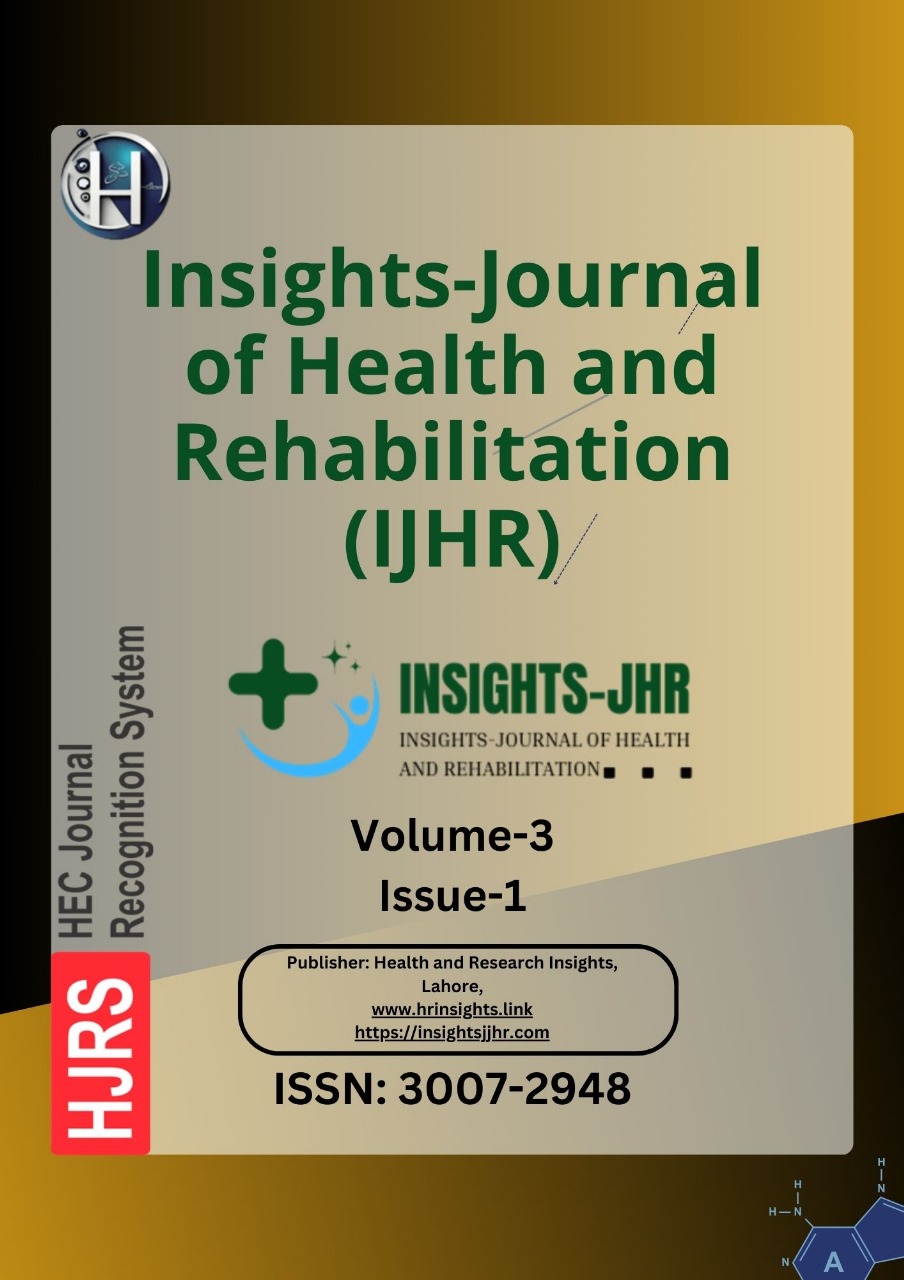STATIC AND DYNAMIC BALANCE IN FLAT FEET AND NEUTRAL ARCHED FEET PATIENTS ATTENDING THE TERTIARY CARE TEACHING HOSPITALS IN DERA ISMAIL KHAN
DOI:
https://doi.org/10.71000/qb7g1444Keywords:
Balance tests, Dynamic balance, Flatfoot, Foot deformities, Pes planus, Postural balance, Static balanceAbstract
Background: Flat feet, medically referred to as pes planus, are a common structural deformity characterized by the collapse or underdevelopment of the medial longitudinal arch, resulting in the navicular bone coming into contact with the ground. This condition is generally asymptomatic during early life but may become symptomatic later, leading to foot pain and functional limitations. In some cases, it can cause significant disability by altering gait mechanics and postural stability.
Objective: To compare static and dynamic balance between patients with flat feet and those with neutral arched feet attending tertiary care teaching hospitals in Dera Ismail Khan.
Methods: A comparative cross-sectional study was conducted on 92 participants using a non-probability convenience sampling technique at public tertiary care hospitals in Dera Ismail Khan. Participants were divided equally into two groups, with 46 individuals each having flat feet or neutral arches. The unipedal stance test, performed with eyes open and closed, was used to assess static balance, while the Y-Balance Test measured dynamic balance using right and left leg composite score percentages. Data were analyzed using SPSS version 22, employing descriptive statistics and non-parametric tests to assess differences between groups.
Results: The sample included 50 males (54.3%) and 42 females (45.7%). The mean score for static balance with eyes open was 43.84 ± 10.86 seconds, while with eyes closed, it was 13.93 ± 25.41 seconds. Dynamic balance tests showed mean right leg composite scores of 75.45 ± 15.81% and left leg scores of 75.28 ± 17.31%. Significant differences were observed in static balance between groups (p = 0.001), whereas dynamic balance scores did not show statistically significant differences between the flat feet and neutral arch groups (p = 0.093 for the right leg; p = 0.144 for the left leg).
Conclusion: The findings of this study suggest that static balance is significantly affected by foot structure, with individuals having flat feet showing impaired balance compared to those with neutral arches. In contrast, dynamic balance appears to be independent of foot structure type. These results underscore the importance of targeted interventions for improving postural stability in individuals with flat feet.
Downloads
Published
Issue
Section
License
Copyright (c) 2025 Mariam Ali, Javeria Shabir, Majeeda Ghani, Naveed Akhtar, Rab Nawaz, Inayat Ullah (Author)

This work is licensed under a Creative Commons Attribution-NonCommercial-NoDerivatives 4.0 International License.







